Wool Week with Harrison Spinks
This year, The Campaign for Wool’s UK Wool Week will take place between 8th-21st October. The week will once again highlight wool’s natural performance qualities, ecological benefits and uses across the country.
Liam McPartland, Farm Manager at Harrison Spinks’ farm in Yorkshire, tells us why wool is such a miracle product for mattress manufacturing and why we should all be using more of it.
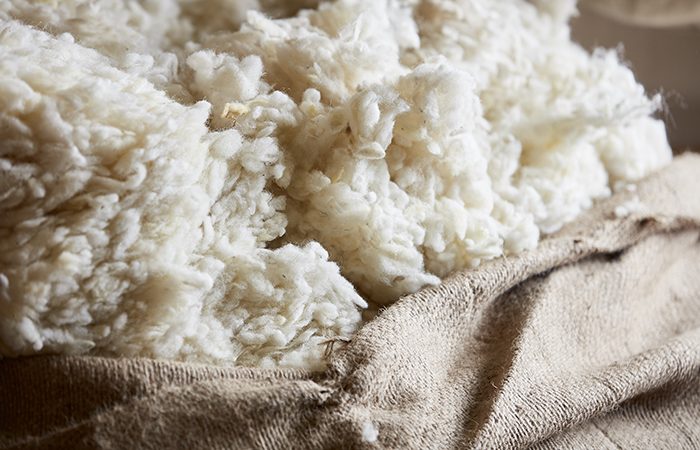
What’s so special about wool?
Wool has been a staple of British heritage for centuries, and we’ve been using it in our beds at Harrison Spinks for as long as anyone in the business can remember. It’s fantastic, and a completely sustainable by-product of the meat industry.
At Harrison Spinks, we champion the use of wool, especially locally sourced and British wool, for its natural properties. Among other things, it is sustainable as less energy is used in is its production cycle than man-made fibres, helping to keep carbon dioxide emissions low, and can be recycled.
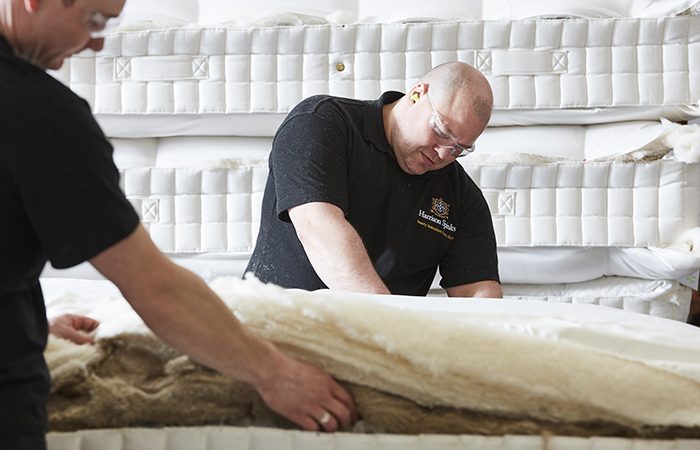
Why is wool a good material to use within mattresses?
Wool grows with a natural crimp which gives it great spring and bounce in a mattress, as well as being naturally supportive, fire retardant and resilient, giving a mattress made from wool a lifetime of quality.
It is also heat regulating and naturally antibacterial and absorbs 23% more sweat than manmade fibres, as well as processing and releasing the moisture, to provide a healthy and hygienic sleeping environment.
If you suffer from allergies, a wool mattress can also help you breathe easier at night, as it can trap floating dust, making the risk of irritation virtually zero.
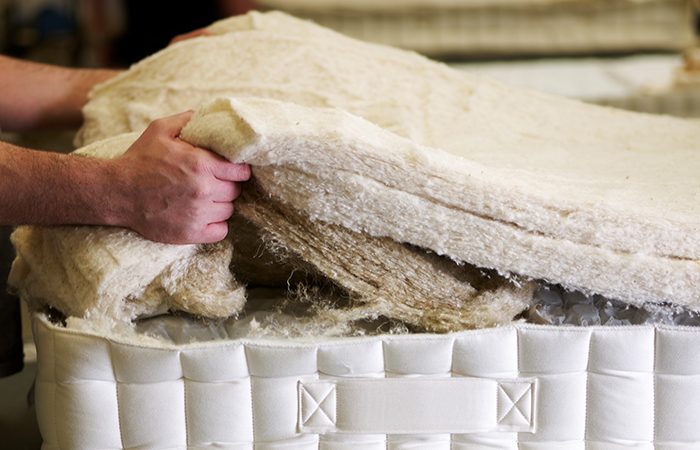
Can you share three facts we might not know about wool?
- Humans have been using wool since the Stone Age, mainly for clothing.
- One single strand of sheep’s wool is thinner than one single strand of human hair.
- Wool provides natural UV protection for both humans and sheep.
Are certain types of wool preferable over others?
For our mattresses, yes. At our farm, we hand rear prize Texel, Mule, Suffolk, Wensleydale and Zwartbles sheep to produce pure-grade Yorkshire wool. In our mattresses, we prefer to use thick wool with a good crimp and a short staple (cluster of wool fibres), which gives it more of a bounce and comfort, and helps it retain its shape – exactly what you’d want from a mattress! We don’t want a limp, soft wool like the sort you’d use for clothing.
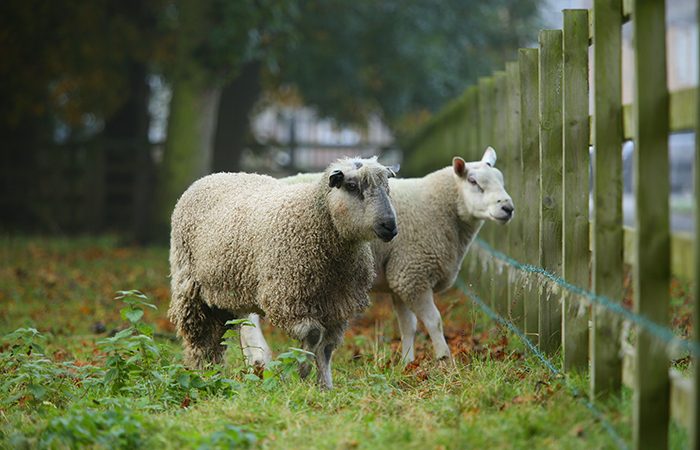
Won’t sleeping on wool make you overheat during the night?
No, quite the opposite, as mentioned before, it is actually a heat regulating material! It is naturally breathable, insulating and wicks away moisture from your body as well as being exceptional at attracting, absorbing and releasing water molecules, while retaining its thermal efficiency. In this way, it helps to regulate your body temperature, keeping you feeling dry in bed, even on the warmest nights.
A Shepherd once told me ‘what keeps it out, will keep it in’, meaning that the wool will keep the heat out in the summer months and the cold out in the winter months.
Is wool resilient? Why?
Yes, because it has a high elastic recovery, meaning it maintains its appearance and has a long lifespan. You’d also have to stretch it very far before it would break. Each fibre can resist tearing and can be bent back on itself over 20,000 times without breaking.
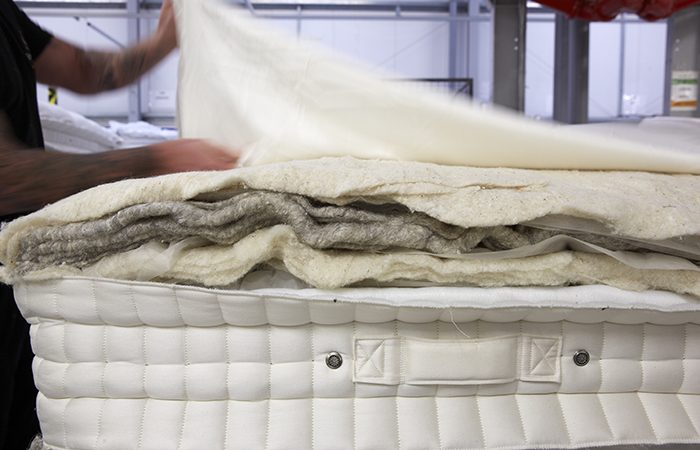
How much wool do you get per sheep?
The fleece from a single sheep can produce around 4kg of wool. Other materials are blended in with the wool, such as mohair, alpaca wool, cashmere, hemp and flax as we find that blending our wool with other materials add to our mattresses’ support and comfort and utilises their properties effectively.
How do you clean the wool?
The process is very thorough, we do this using an local company. The wool is first washed at a very high temperature to remove stubborn dirt, then excess water is drained, and it goes into a detergent bath. This removes contaminants such as dirt, sweat, paint and lanolin (a protective anti-bacterial grease layer).
Much like when you wash your plates at home in the sink, once the dirt is washed out, it will not go back into the fibre. After a third and final clean, the wool is rinsed and then blow dried and comes out lovely and fluffy at the other end, ready for us to use in our mattresses.
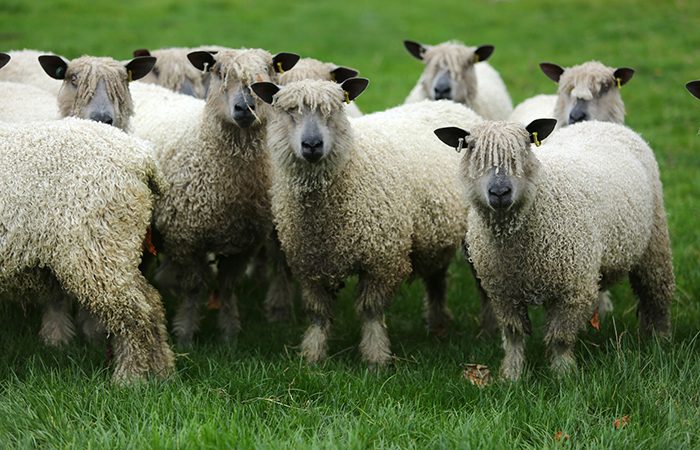
Then what happens?
After cleaning, the wool travels to our factory where it is transformed into the top comfort layer of our mattresses. It goes into a blending machine, which is essentially a big comb, where the fibres are detangled and teased to create a light and delicate mesh. This is then layered to create the pads of wool that we insert into the very top of our mattresses.
What else is wool used in that we might not know?
You might not know that wool is widely used for coffins and building insulation.
What’s next for wool?
I think wool has a bright future in the fight against climate change. As mentioned before, it uses less energy to process than man-made fibres, so carbon dioxide emissions stay low and waste is reduced through recycling. I also think that people should start wearing wool instead of so much cotton.
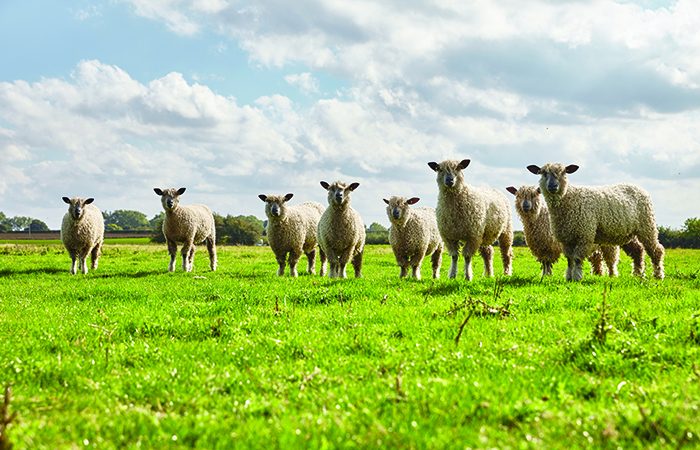
Contact Harrison Spinks through their BCFA Product Finder Page




